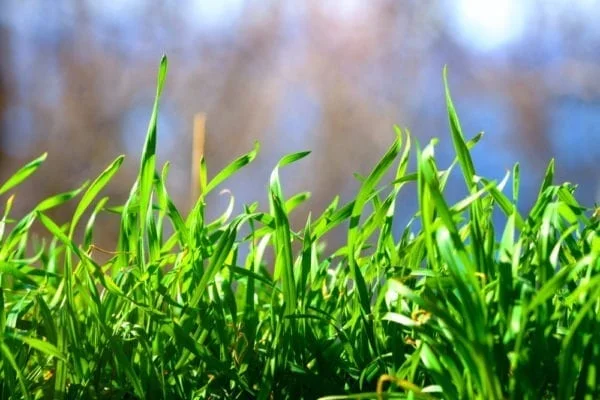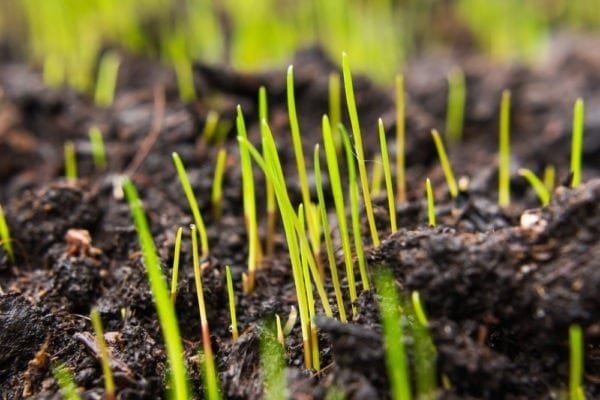5 TIPS FOR BEAUTIFYING YOUR NEW HOME’S LAWN – HOW TO CARE FOR A NEW LAWN

HOW TO CARE FOR A NEW LAWN

All settled into your new home but don’t know how to care for a new lawn? For the lucky ones, at the end of the long and winding road that happily leads you into your new home, lies not a pot of gold, but a section of outdoor domesticated bliss – your very own lawn. After you are all moved in and unpacked, you can finally fulfill your destiny to spend spring and summer Saturdays roaming the aisles of suburban garden centres. The only hiccup may be, in a tricky weather system, some grass that you become the caretaker of, has taken a serious beating and isn’t being passed down to you in tip top shape. Drastic swings in temperature, months of frost, snow, hail, wild wind, scaly dryness – honestly anything that looks even remotely green after all of that, deserves an award. So, are you up for the challenge of bringing your backyard back to life?
Loving on your lawn does not have to be daunting; follow these five easy steps and you will be sewing gorgeous sod in no time. From how to overseed a lawn to how to aerate your lawn!
#1 – It All Starts With Soil
Just like the strength of a building lies in its foundation, the strength (and ultimately the survivability too) of a lawn, starts and ends with the state of its soil. Spending time and money grooming what is showing on the outside, will all mean nothing if you do not take care of what is happening on the inside. First things first, you are going to want to test your dirt; avoid the temptation to skip this one. You are setting in motion the steps to literally grow something from the ground up, and although it doesn’t involve saving lives; it does require dedication! The results here will tell you whether you are working with an acidic, neutral, or alkaline environment. Watch a quick video here for a simple breakdown of the best way to collect your samples. If you are interested and inspired to take more control and decipher findings yourself, home testing kits may be right up your alley. Use the provided charts and discover how best to tackle your new project. If you plan on sending results off to a third party tester, expect to wait a couple of weeks to get anything back. Definitely keep this in mind when mapping out your planting/seeding/sodding schedule. It would be unfortunate to have a big green purchase lying around (potentially drying out, getting pecked at by critters, etc.) because you are waiting on soil data to come in. Pro tip: once you know what assistance your ground needs and have bought products accordingly, following instructions on your supplies is key. Wearing certain clothing, protective equipment, or adhering to a specific application process may all be necessary for safety purposes.
#2 – If You Don’t Scarify, Your Lawn Could Terrify
For your grass to reach its full potential, you have to give it a fighting chance. The greatest soil boosters, fertilizers, and feed will not end up accomplishing much if there is a thatched roof like situation blocking anything and everything from being absorbed. This is the stuff that when the final snow and ice melts away, kind of gives your lawn a puffy, meadow, hobbit/shire type of vibe. Maybe cute initially, but potentially disastrous if not dealt with properly. Water will not drain like it is supposed to, excess moisture will encourage more expansion of the mossy nuisance, and your entire backyard could get really soggy, really quickly. As with most things in life, this is nothing that a little sweat and hard work will not fix! Enter: the scarifier, sometimes referred to less interestingly as a dethatcher or power rake. This garden tool’s mission is to clear your lawn of dead moss, outdoor debris, and old grass clippings, in order to make way for fresh growth. Please note this procedure should only get underway once you are certain spring has sprung in your area, and subsequently your grass is actively growing. This is most certainly an invasive process after the dormancy of winter, and you will want your grass to have the opportunity to recover and rejuvenate well. Stay disciplined and regular with this lawn care step and you should only have to use it once a year. If years of negligence add up, you might have to scarify repeatedly to get successful results. An added benefit to using this machinery is that its cutting action can also help to aerate your soil. Lawn aeration is usually a separate step entirely, but does not have to be done every year. Scarifiers can usually be found in both electric or man powered varieties and do tend to go on sale during spring. If you are not feeling enthusiastic about adding another piece of equipment to the shed, most home improvement/garden centre type stores will rent them out. Inspired to really get in touch with the land and keep things old school and simple? A regular rake (with some serious elbow grease) can get the job done too.
#3 – The Different Types Of Seeding
If you have established what kind of soil you are working with, you probably also know if you are going to need to start from scratch, or can improve upon your existing situation, in regards to seeding. If things were seriously bad, or never even developed to begin with, sodding your space may be where you want to kick things off. Find simplified steps to execute that outdoor adventure here. If seeding is the direction you are headed in, you are either going to strip things down to the basics aka reseeding, or simply boost and beautify an already fairly good setting by overseeding.
Reseeding is starting anew over the majority of your space. This will initially involve killing off any stragglers left standing from your last growing season, to give yourself a blank slate. You will absolutely want to understand your soil position (see #1 above), prepare it appropriately and then seed to your heart’s delight. This new baby grass will need to be loved on diligently though, and most likely will not be a cheap endeavour. Investing in a lawn cover to give your new project an environment to thrive in is important as well. Although when executed successfully, this can be a very rewarding journey, you may want to take stock of how much work you are able and/or willing to put in before you get started.
Overseeding is a less costly, labour intensive undertaking. Experiencing some unsightly bald patches where dirt persists? Let’s get to work! Although its name may lead you to believe that what you will be doing here is throwing an excess amount of seeding at your lawn and hoping the old adage ‘the more the merrier’ applies, overseeding is simply adding a reasonable amount of new grass seed onto an existing lawn. If you have ever heard the expression ‘reseeding the lawn’, when all that happened was a scattering of new seed, by definition, overseeding was actually taking place. Treat your struggling, less lush areas to a good raking (or get more intense with a scarifier, see #2), and then get to scattering seeds. Simple and easy!
How do you know what kind of seeds are best to use in your particular climate/area? Asking yourself how much sun your lawn will get and how much foot traffic it is going to be subjected to are a great place to start. And although there are some places where you can penny pinch and discover your own resourcefulness along your gardening journey; messing with cheap seeds shouldn’t be it. You will get what you pay for. Find more detailed advice on exactly what to do with seeds and seeding here. Check out this amazing article by happydiyhome.com as well to find the best types of seeds to use!

#4 – Mow What You Grow
When you live in a harsh, cold weather climate or one without a lot of excess moisture, popular opinion can be that the less you mow your lawn the better. This is false and fake news. Oddly enough, grass is not unlike your own hair when you are trying to add length – cutting and cutting often is the key to promote fresh and healthy growth. Getting into a routine of mowing once every couple of weeks in the springtime, and then increasing to once a week during summer months, will set in motion a hearty cycle of replenishing new grass. However, this doesn’t mean you can go wild and give your lawn a buzz cut every time around. Keep your blades sharp so they are trimming efficiently and make sure they are not set too low. Ignoring these maintenance points can lead to drying out your soil and shredding/fraying your grass tips instead of actually cutting them; effectively killing all future growth right then and there. An extra fun element to your new venture will be deciding what kind of lawn mower personality you have. Electric, gas, diesel, sit down, stand up, or push with just the energy of your will and determination? Sky’s the limit! Check out a helpful guide on how to choose the right mower for yourself here.
#5 – Stay The Course
Similar to the sometimes exhausting process of finding your new home, your new lawn will be a labour of love. Rome was not built in a day and good groundskeepers are the unsung heroes of your housing development, manicured parks and most notably the world of professional golf. Will it be worth it? From the outside looking in, it may appear that a simple patch of grass isn’t offering you much in return, when perhaps compared to a vegetable garden or flower bush. Alas, less can sometimes decidedly be more. The benefits of your turf are tried, tested, and true. Hopefully these tips answer your questions about how to care for a new lawn! When you have a flourishing green space it is:
- Helping to clean the air and net C02
- Assisting in trapping your neighbourhood stormwater runoff
- Improving your soil structure
- Minimizing noise pollution (the science behind this one is crazy cool)
- Working to keep your entire domestic space (yes house and all) cooler during warmer months
In closing, we can only suggest a few more straightforward steps. Buy a sprinkler you love and follow local watering guidelines so your neighbours don’t rat you out and you end up getting fined. Grab yourself a pair of white coloured, classic Dad sneakers (they are the most important part of the official uniform), a practical, comfortable hat that will stand the test of time (because you will undoubtedly chuck it into the shed at the end of every fall and keep it for many years to come), and maybe, if you are feeling brave enough, start to practice how you want to say, “Get off the lawn!”. You have made it to the domesticated big time and there is no looking back. Have fun with your backyard, and stay patient. Good grass comes to those who wait!






